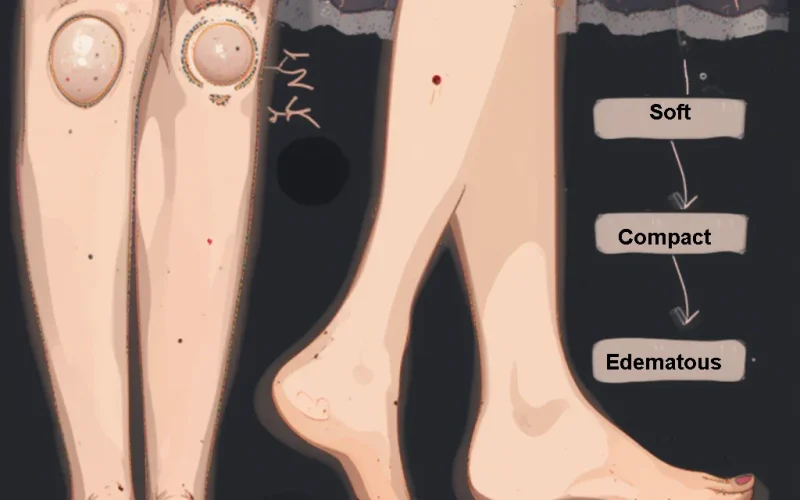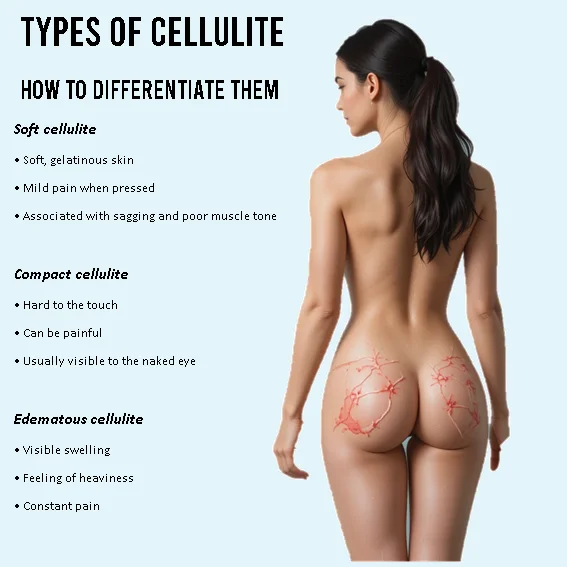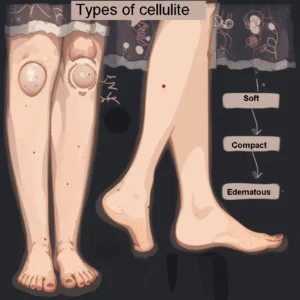

Types of cellulite: discover how to identify
Types of cellulite: discover how to identify and eliminate them effectively
Types of cellulite are one of the most common searches among those who want to improve the appearance of their skin and their body health. Although it is often associated solely with aesthetic issues, cellulite can actually be a sign of internal imbalances. For this reason, knowing the different types and how to recognize them is essential to finding the right treatment.
Throughout this article, we will explain, in a clear and natural way, what they are, how they affect your body, and what options you have to combat them effectively and consciously.
1. What is cellulite and why does it appear?

Cellulite is a connective tissue disorder that primarily affects women. It is generally located in areas such as the thighs, buttocks, abdomen, and arms. It is characterized by an accumulation of fat, fluids, and toxins under the skin, creating the typical “orange peel” appearance.
This problem can be caused by several factors. For example:
- Hormonal imbalances
- Fluid retention
- Lack of physical activity
- Unhealthy diets
- Stress or genetic predisposition
In this sense, identifying its origin is key to treating it more effectively. Therefore, let’s now learn about the different types of cellulite that exist.
2. Types of cellulite: how to differentiate them
Knowing the types of cellulite will allow you to choose the best possible treatment and, at the same time, adjust your lifestyle habits. Although they share certain characteristics, each type has specific characteristics that should be taken into account.
2.1 Soft cellulite
This is the most common in sedentary women or those over 30. It usually feels flaccid to the touch and moves visibly when changing positions. It is generally located on the buttocks, arms, and thighs.
Key signs:
- Soft, gelatinous skin
- Mild pain when pressed
- Associated with sagging and poor muscle tone
2.2 Compact cellulite
It usually appears in young women or athletes. Although the skin appears firm, squeezing it can cause the characteristic dimples to appear. It is also often accompanied by stretch marks.
Key signs:
- Hard to the touch
- Can be painful
- Usually noticeable with the naked eye
2.3 Edematous cellulite
This is less common, but more serious. It primarily affects the legs and knees, causing swelling and persistent discomfort. It is associated with poor circulation and fluid retention.
Key signs:
- Visible swelling
- Feeling of heaviness
- Constant pain
3. Factors that aggravate different types of cellulite
Several factors can worsen cellulite. Although not all of them can always be controlled, it is very important to be aware of them to prevent its progression.
- Diets high in sugars and trans fats
- Excessive salt and alcohol consumption
- Smoking
- Wearing tight clothing
- Sedentary lifestyle
- Chronic stress
As a result, reducing these factors significantly improves skin health and contributes to the reduction of cellulite. Therefore, it is essential to remain vigilant against these habits.
4. Types of cellulite and how to treat them according to their origin
Treatment for different types of cellulite varies depending on its form and cause. Below, we explain what to do in each case to improve your skin from the source.
4.1 Treatment for soft cellulite
- Toning exercises
- Manual or mechanical lymphatic drainage
- Firming creams
- Collagen supplementation
4.2 Treatment for compact cellulite
- Anti-cellulite massages
- Radiofrequency treatments
- Antioxidant-rich diet
- Regular exercise focused on strength and endurance
4.3 Treatment for edematous cellulite
- Improving circulation with moderate activity
- Lymphatic compression
- Avoiding salt and refined sugars
- Natural therapies such as herbal medicine
As you can see, each type requires a different approach. Therefore, it is crucial to tailor the methods to your individual needs.
5. Myths about cellulite that you should leave behind
There are many misconceptions surrounding cellulite. For this reason, it’s important to leave behind some of the most common myths:
- “Only overweight people have it”: false. Cellulite affects women of all sizes.
- “It’s only removed with laser or surgery”: incorrect. Lifestyle changes can make a big difference.
- “Dieting eliminates cellulite”: not entirely. A healthy diet helps, but it must be combined with other actions.
Therefore, it’s essential to have verified, evidence-based information.
6. How to prevent all types of cellulite
Prevention is always better than treatment. For this reason, maintaining a healthy lifestyle can help you keep cellulite under control:
- Drink at least 2 liters of water a day
- Exercise regularly (at least 3 times a week)
- Prioritize fruits, vegetables, and natural foods
- Avoid alcohol and tobacco
- Sleep well and reduce stress
If you consistently apply these recommendations, it will be much easier to prevent the appearance of different types of cellulite.
7. Effective Home and Natural Remedies
Some natural remedies can complement conventional treatments and also significantly improve the appearance of your skin:
- Ground coffee as an exfoliant
- Massages with coconut oil and rosemary
- Application of diluted apple cider vinegar
- Dandelion tea for cleansing
In short, these remedies aren’t miraculous, but they help as part of a comprehensive approach, especially when combined with good habits.
8. When to See a Professional
If you notice that home treatments aren’t working, or if the pain increases over time, it’s a good idea to see a specialist. A dermatologist or nutritionist will be able to provide you with the best advice based on your skin type, diet, and physical activity level. Therefore, don’t hesitate to seek professional help if you feel it’s necessary.
Conclusion
Understanding the types of cellulite and their characteristics is undoubtedly the first step to combating it effectively. While there is no definitive cure, there are many effective strategies that, with consistency, can reduce its appearance and improve overall skin health. Therefore, adopting a more active, healthy, and conscious lifestyle is essential and can make a huge difference. However, it’s not about perfection; it’s about well-being. Therefore, choose what works best for you and, above all, remember that every small change adds up and contributes to firmer skin and a healthier life.
Explore other related articles by clicking here and Visit the official website here




